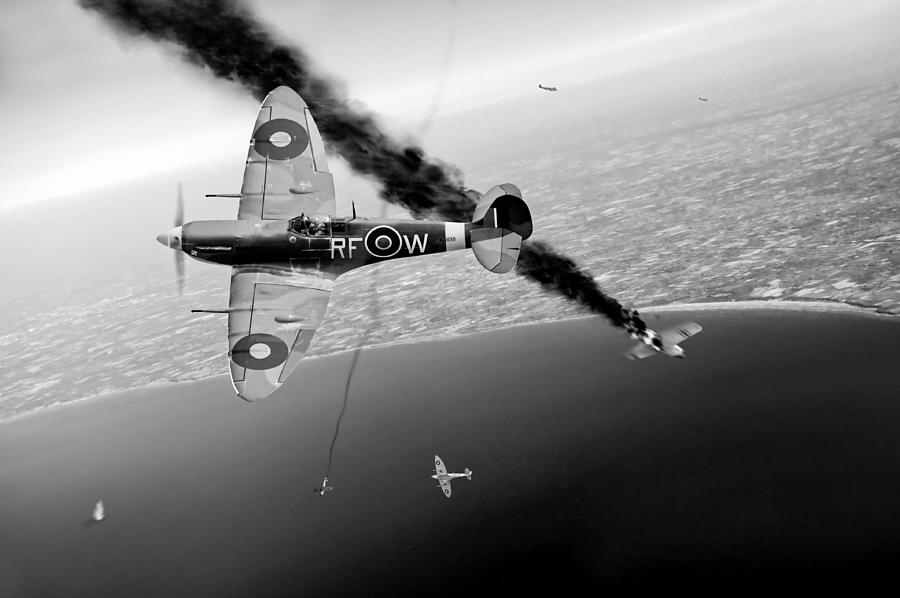

Scott Booth/ Laguna’s Spitfire Legacy Project/ There are only around 240-250 spitfires left in the world and only 40-45 of those are still flying, but not a single one of those is a Spitfire flown by Polish Squadron 303. “Reconstructing it would make it very special for that reason as well: it will also be the only 2B in the world to be flying.”īooth told TFN: “This spitfire is very valuable and incredibly rare for a number of reasons.

There were 22 types made and this is a type 2B, which is a very early Spitfire of which there are only 3 examples in the world, one is in a Canadian museum, but no longer flying and one other, which is registered, but is essentially a bucket of parts and ours would be the third. “In addition, the plane is a very rare type of Spitfire. When we get it reconstructed, it will be the only Spitfire of the 303 squadron to be flying. “This plane was flown by all the most famous pilots of the 303 squadron, mostly Poles, but also a Canadian, John Kent. “There are only around 240-250 spitfires left in the world and only 40-45 of those are still flying, but not a single one of those is a Spitfire flown by Polish Squadron 303. Public domainīooth told TFN: “This spitfire is very valuable and incredibly rare for a number of reasons. The plane last flown by Acting Wing Commander Piotr Łaguna, a pilot of the Polish 303 squadron which was part of the British Royal Air Force in WWII and played a key role in the Battle of Britain. He has also had his plans approved by the UK’s Civil Aviation Authority (CAA), who have given the go-ahead for the reconstruction and re-registration of the aircraft. The discovery led to Booth’s growing fascination with the Polish 303 Squadron and Łaguna and the other pilots who flew in the P3881 Spitfire, which culminated in him setting up the Laguna’s Spitfire Legacy Project to tell their story.Īfter carefully researching and reconstructing a log of the Spitfire’s daily flights and identifying every pilot who took part in her missions, as well as the number of enemy aircraft which were shot down or damaged, he now intends to rebuild the original Spitfire. Scott Booth/ Laguna’s Spitfire Legacy Project He also discovered that Łaguna had been flying one of the squadron's plane's when it was shot down over France in 1941, crashing in a field in Calais and killing Łaguna.Īfter buying an engine online he then discovered that the engine had belonged to a Supermarine Spitfire P8331 “Sumatra”. He then discovered that the engine had belonged to the Supermarine Spitfire P8331 “Sumatra”, the plane last flown by Acting Wing Commander Piotr Łaguna, who was the Commanding Officer of 1 Polish Fighter Wing, which included the Polish 303 squadron which was part of the British Royal Air Force in WWII and played a key role in the Battle of Britain.
WW2 ONLINE SPITFIRE SERIAL NUMBERS
Two years later he came across an original early Rolls Royce Merlin engine on sale, which he put in an offer to buy.Īfter travelling to pick it up, Booth noticed that there were Air Ministry Serial numbers all over the engine, and intrigued, decided to investigate. Inspired, Booth wanted to recreate a similar coffee table for himself and began searching for spitfire engines online.īooth was waiting to take a dream flight in a two-seater Spitfire in 2016, when he noticed a coffee table in the waiting area made from a Rolls-Royce Griffon engine used in some late Spitfires. Scott Booth, founder of the Laguna’s Spitfire Legacy Project, was waiting to take a dream flight in a two-seater Spitfire in 2016, when he noticed a coffee table in the waiting area made from a Rolls-Royce Griffon engine used in some late Spitfires.

A former British Royal Marine is to reconstruct a Spitfire plane last flown by Polish pilot Piotr Łaguna of the legendary Polish 303 Squadron, after unwittingly buying the plane’s engine online and becoming fascinated with the history he discovered.


 0 kommentar(er)
0 kommentar(er)
